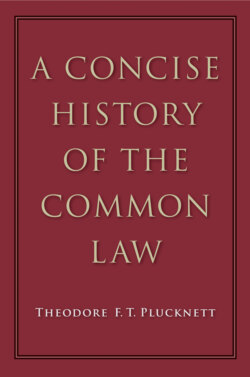Читать книгу A Concise History of the Common Law - Theodore F. T. Plucknett - Страница 129
На сайте Литреса книга снята с продажи.
THE ANGLO-NORMAN CURIA REGIS
ОглавлениеThe court of the Anglo-Norman kings consisted, therefore, of the Anglo-Saxon Witan, which was essentially deliberative in character, radically transformed by the infusion of Norman ideas. There is a long and somewhat fruitless discussion as to whether the Norman Curia Regis is or is not the same institution as the Anglo-Saxon Witan; in this form the question can hardly be answered. It seems rather to have been the fact that the formless and indefinite Witan was so thoroughly transformed by the Norman kings that it is purely a matter of fancy whether one describes the product as a new institution or as a modification of the old one.
There are cases to be found where the Witan, under the Anglo-Saxon kings, exercised quasi-judicial functions; it is perfectly clear, however, that the Witan did not entertain the ambition of becoming a national court. The whole spirit of Anglo-Saxon law made for the maintenance of local institutions, and more than once we find laws prohibiting parties to appeal to the King unless there has been a grave default of justice in the regular courts. When judicial matters do appear before the King and the Witan they are apt to be treated as political disputes requiring a political solution by negotiation, compromise, and royal mediation rather than a strictly judicial treatment. With the Norman Conquest we begin to find the transformation of the deliberative Witan into the judicial court. The transformation was, of course, slow, and even after the conquest there are proceedings in the King’s Court of the more ancient type. Still, the feudal idea of a court of tenants-in-chief was sufficient to supply the model of a supreme royal court, and it was from that model that the judicial system of the common law later developed.
